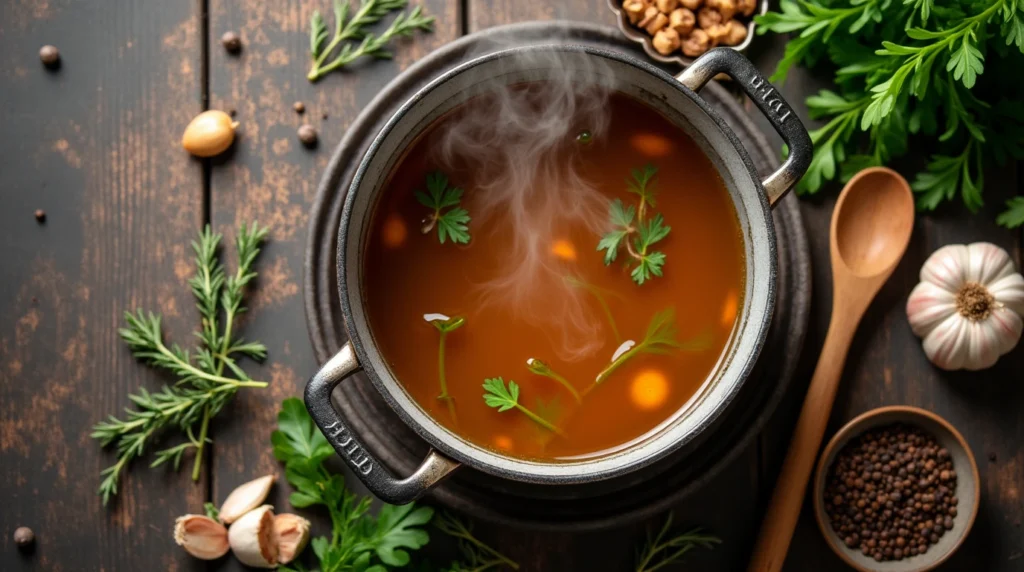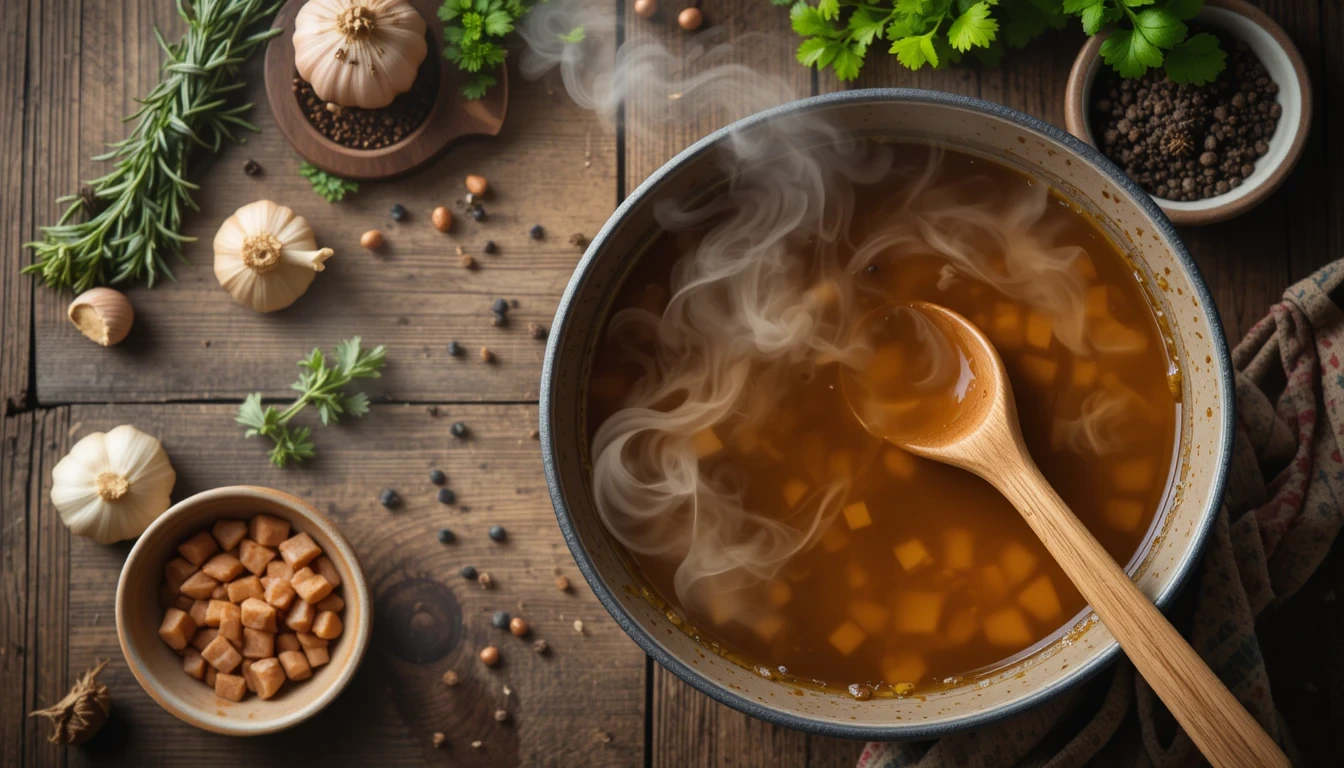Table of Contents
Beef bouillon is a pantry staple that can transform any dish with its deep, savory flavor. Whether you’re making soups, stews, or sauces, a good beef bouillon can take your cooking to the next level. But did you know that many home cooks unknowingly make mistakes when using beef bouillon, leading to overpowering flavors, lackluster dishes, or even wasted ingredients?
If you’ve ever found your soup too salty or your sauce lacking depth, you’re not alone! These common mistakes can easily be avoided with a few simple tweaks. Plus, using beef bouillon correctly can save you money by enhancing your meals without needing expensive cuts of meat or long cooking times.
Compared to homemade beef broth, beef bouillon offers a quick and convenient way to add rich, meaty flavor to your dishes without hours of simmering. So, whether you’re a seasoned home cook or just starting your kitchen adventures, this guide will help you use beef bouillon the right way. Let’s dive into the six common mistakes you need to avoid!
What Is Beef Bouillon?
Beef bouillon is essentially concentrated beef stock that comes in cubes, granules, or liquid form. It’s designed to add a burst of umami flavor to your dishes without requiring homemade stock. But have you ever wondered why it’s called “bouillon” and not just “beef broth”?
The word “bouillon” comes from the French verb bouillir, meaning “to boil.” That makes sense, right? Because to make a great broth, you need to boil ingredients to extract all that rich, delicious flavor. It’s the culinary shortcut to depth and complexity in cooking! As the saying goes, “The way to a man’s heart is through his stomach,” and beef bouillon ensures that every meal is both comforting and full of flavor.
Ready to make the most of beef bouillon in your kitchen? Keep reading to learn what mistakes to avoid!

Why You’ll Love Beef Bouillon
1. Enhances Flavor Instantly
Beef bouillon is like a secret weapon for rich, meaty flavor. Whether you’re making a quick soup or adding depth to gravies and marinades, it ensures every bite is packed with umami goodness.
2. Saves Money & Time
Instead of buying expensive cuts of meat or spending hours simmering homemade broth, beef bouillon gives you the same deep flavor in seconds. It’s an affordable, time-saving ingredient every home cook should have!
3. Versatile & Easy to Use
From soups to casseroles to stir-fries, beef bouillon enhances countless dishes. Plus, it’s available in cubes, powder, and liquid forms, making it easy to use in any recipe.
6 Common Mistakes to Avoid When Using Beef Bouillon
1. Using Too Much Bouillon
Beef bouillon is concentrated, meaning a little goes a long way. Using too much can make your dish overly salty or overpowering. Always start with a small amount and taste as you go!
2. Not Dissolving It Properly
If you toss a bouillon cube directly into your dish without dissolving it first, you might end up with uneven seasoning. Always dissolve bouillon in hot water before adding it to your recipe.
3. Ignoring Sodium Content
Many store-bought beef bouillon brands are high in sodium. To prevent overly salty dishes, choose low-sodium options and adjust your seasoning accordingly.
4. Forgetting to Balance Flavors
While beef bouillon adds a meaty depth, it shouldn’t be the only seasoning in your dish. Pair it with herbs, spices, and fresh ingredients to create a well-rounded flavor profile.
5. Using It as a Direct Broth Replacement
Beef bouillon is concentrated and should be diluted properly. If a recipe calls for broth, mix bouillon with water according to package instructions instead of adding it straight in.
6. Overcooking Dishes After Adding Bouillon
Adding beef bouillon too early in the cooking process can cause flavors to become too intense or salty as liquid reduces. Add it later in the cooking process and taste-test as you go.
What to Serve with Beef Bouillon-Based Dishes
- Crusty Bread – Perfect for soaking up rich, flavorful broths.
- Mashed Potatoes – Complements beef bouillon-based gravies beautifully.
- Steamed Vegetables – Adds a fresh, balanced contrast to savory dishes.
- Rice or Pasta – Absorbs the deep flavors of bouillon-based sauces perfectly.
Top Tips for Perfecting Beef Bouillon
- Adjust Salt Levels – Always taste before adding extra salt to your dish.
- Use the Right Form – Bouillon cubes, granules, and liquid have different strengths; check package instructions for correct measurements.
- Enhance with Fresh Ingredients – Adding fresh herbs, garlic, or onions can elevate the flavor even further.
- Experiment with Different Brands – Not all beef bouillons taste the same! Try a few brands to find your favorite.
Storing and Reheating Tips
- Storage: Keep bouillon cubes and granules in a cool, dry place. Liquid bouillon should be refrigerated after opening.
- Shelf Life: Bouillon cubes last up to 2 years, while liquid forms may expire sooner—always check the label.
- Reheating: If using beef bouillon in soups or sauces, reheat gently over low heat to preserve the best flavor.
FAQ
What is beef bouillon?
Beef bouillon is a concentrated beef stock available in cubes, granules, or liquid form. It enhances dishes with a rich, umami flavor without requiring homemade broth.
Are beef broth and beef bouillon the same thing?
Not exactly. Beef broth is a liquid made by simmering beef and bones, while beef bouillon is a concentrated form used to create broth when dissolved in water.
What is another name for beef bouillon?
Beef bouillon is also called beef stock cubes, beef base, or beef seasoning, depending on its form and brand.
How do I substitute beef bouillon?
You can substitute beef bouillon with beef broth (use one cup of broth per bouillon cube), or use homemade beef stock for a more natural alternative.
How is bouillon made?
Bouillon is made by simmering beef, bones, and seasonings, then dehydrating the liquid to form a concentrated cube, powder, or paste.
Is bouillon a French word?
Yes! The word “bouillon” comes from the French verb bouillir, meaning “to boil.”
Is beef bouillon healthy?
It depends on the brand. Some contain high sodium and additives, while others offer low-sodium, organic, or MSG-free options.
Can I use broth instead of bouillon?
Yes! If a recipe calls for bouillon, you can use beef broth instead, adjusting for salt since bouillon is more concentrated.
What does bouillon taste like?
Bouillon has a rich, savory, umami taste with a deep meaty flavor, often enhanced with seasonings like garlic, onion, and herbs.
Try This Recipes Next!
If you’re interested in exploring more delectable dishes, consider trying our guide to another crowd-pleasing recipe!

